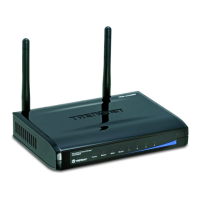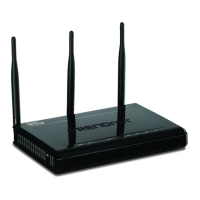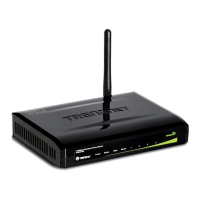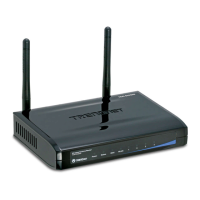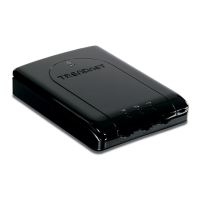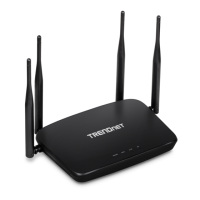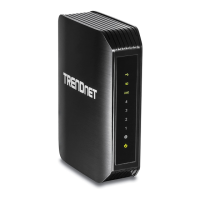28
Advanced
4.3.1 Advanced: DMZ
DMZ Setting
DMZ means "Demilitarized Zone." If an application has trouble working from behind the router,
you can expose one computer to the Internet and run the application on that computer.
When a LAN host is configured as a DMZ host, it becomes the destination for all incoming
packets that do not match some other incoming session or rule. If any other ingress rule is in
place, that will be used instead of sending packets to the DMZ host; so, an active session,
virtual server, active port trigger, or port forwarding rule will take priority over sending a packet
to the DMZ host. (The DMZ policy resembles a default port forwarding rule that forwards every
port that is not specifically sent anywhere else.)
The router provides only limited firewall protection for the DMZ host. The router does not
forward a TCP packet that does not match an active DMZ session, unless it is a connection
establishment packet (SYN). Except for this limited protection, the DMZ host is effectively
"outside the firewall". Anyone considering using a DMZ host should also consider running a
firewall on that DMZ host system to provide additional protection.
Packets received by the DMZ host have their IP addresses translated from the WAN-side IP
address of the router to the LAN-side IP address of the DMZ host. However, port numbers are
not translated; so applications on the DMZ host can depend on specific port numbers.
The DMZ capability is just one of several means for allowing incoming requests that might
appear unsolicited to the NAT. In general, the DMZ host should be used only if there are no
other alternatives, because it is much more exposed to cyberattacks than any other system on
the LAN. Thought should be given to using other configurations instead: a virtual server, a port
forwarding rule, or a port trigger. Virtual servers open one port for incoming sessions bound for
a specific application (and also allow port redirection and the use of ALGs).
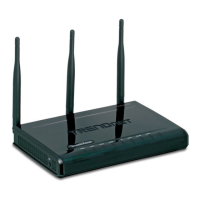
